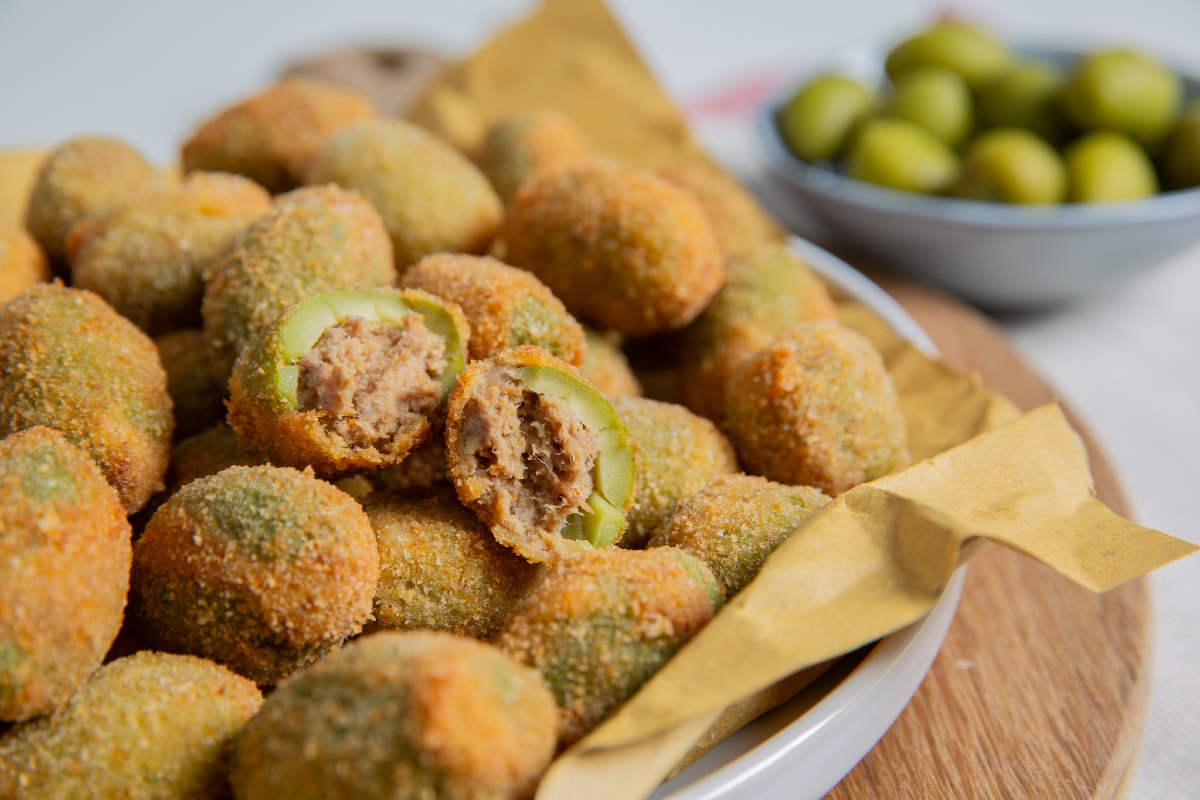Air fryer patties
- Easy
- 30 min

Olive Ascolane (Ascolana-style Olives) are a cherished appetizer originating from Italy, particularly the Ascoli Piceno area in the Marche region. This culinary tradition is deeply rooted in local culture, where entire families gather to craft these delights in large batches. They meticulously prepare, bread, and freeze the olives, ensuring a supply that's ready to be fried and savored at a moment's notice. Ascolana olives are also a popular choice for street food. Among the renowned spots for these treats is "Siamo Fritti" in Ascoli. We had the honor of featuring Gabriella Calvaresi, a revered chef from this establishment, renowned for her authentic preparation of Ascolana olives. The process is captivating: the olives are delicately spiraled open, then filled with a rich, hand-ground meat mixture — Gabriella uses her family's traditional grinder for an authentic touch. Besides the classic recipe, we also present a vegetarian version of Ascolana olives. This alternative is just as enticing, starring the same brined olives but without the meat.



Then add the beef and pork 7, season with pepper 8, cover with a lid, and cook for about 20 minutes 9.


Now cook for an hour with the lid on 13. After that time, turn off the heat and let it cool 14. Remove the cloves from the onion and then pass everything through a meat grinder.

Transfer the ground meat to a bowl, add the grated Parmigiano Reggiano DPO cheese and the egg 16, season with grated nutmeg 17, and mix with your hands until you achieve a uniform mixture 18.

Now, spiral-cut the olives to remove the pit 19 20. Move on to the stuffing process: open up the olives 21.

Stuff the olives with the filling 22 and close them 23 to recreate their original shape 24.

Now, let's move on to the breading process: beat the eggs with salt 25, then coat the stuffed olives first in flour 26, and then dip them into the eggs 27.

Drain to remove any excess egg 28, and then roll the olives in breadcrumbs 29. Place them on a tray 30.

To finish, let's move on to frying: heat the vegetable oil, and when it reaches a temperature of 355°F / 180°C, carefully place the olives 31 into it. Cook them for about 2 minutes, just until they turn golden brown. Then, remove them from the oil and place them on a tray lined with paper towels 32. Serve the olive Ascolane while they are still slightly warm 33!